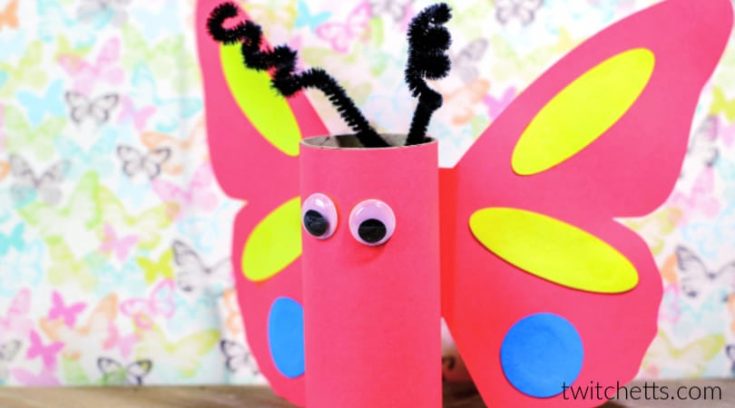
For your child's first knitting project, you can begin by making simple items. Baby bibs can also be made using large squares or a cord. You can also make stuffed animals to introduce your child to shapes. Once you have completed knitting the stuffed animals, you can add stuffing. A sweater or blanket is an advanced project.
Basic knitting stitches
It is possible to make many beautiful items by learning the basics and techniques of knitting. This simple yet useful skill can lead to some of the most creative cables and best-looking colorwork. The kitchener stitch (also known by grafting) is an excellent way to join two live stitches. It's especially useful for shoulder seams, toes in socks and collars of sweaters. Moss stitch, another wonderful stitch, is great for creating beautiful textures. You work it by switching between knit and purl sequences every two rows, creating a gorgeous motif. Double moss is a British term for this stitch.
These basic stitches are great for creating a variety of projects such as a scarf, hat, or other knit items. You can also try combining the basic knit stitch with other stitches for more intricate knit patterns.
Basic cast off method
Two basic casting methods are available for simple knitting. You can use the traditional way, or a stretchy method. The end of the knitted item is sealed with a stretchy cast-off. This is particularly useful when garments are stretchy. It doesn't really matter what method it uses, just ensure it's loose enough for your garments to stretch.

Use circular needles to cast your work. Follow the same steps. Casting off will result in your stitches ending in a spiral. This step will be less noticeable if you are using fine yarn and small needles. However, it will be obvious if your yarn is bulky and has large needles.
Wrap yarn around your fingers
One of the simplest knitting techniques is to weave yarn around your fingers. To do this, wrap one end a yarn around your thumb. Wrap it around your index finger and middle finger. Continue to weave the yarn between your fingers. This should be done starting from the pointer finger, ending at the end of the middle and the ring fingers. Wrap the yarn around each of your fingers two more times, and then repeat. The end result will be a ring-like bracelet.
Your right and left hands are where the knitting needles are located. The working yarn should be held on your left hand needle. The left needle holds the empty end. Continue knitting and wrapping the yarn around the needles until you have the desired number of stitches.
Dropped stitches
Dropped stitches can add great interest to a basic knitting project. It is simple: Wrap yarn a little longer on one row and then drop the extra wrap on your next row. This gives a piece a fluid, open look. It is not easy and requires practice. A major problem is uneven tension. It can lead to drop stitches that are uneven in size.
Dropped stitches are easy to fix with a crochet hook or knitting needle. Place your hook above the stitch on the yarn strand. You should ensure that the hook does NOT cross the rungs. Turn each hook to secure it. Once the stitch has been reattached to its needle, it will look just like it never was dropped.

Keep track of the rows you have knit
One of the most useful tools when knitting is a row counter. These devices are more reliable than writing tools and keep track of how many rows have been knit. They're also more intuitive to use. You just have to tap on the appropriate spot to mark a line.
Most knitters keep track of their progress on a regular basis. To see how many rows are left to go, most knitters keep track of their progress by taking the postits off the chart. For instance, cable knitting requires them to keep track on the row number of each cable row.
FAQ
What are some hobbies that you like?
Hobby Ideas that are great for people who enjoy teaching others.
Hobbies are great ways to spend time doing what you enjoy while learning something new at the same time.
While there are many types of hobbies available, most share the same characteristics. They're usually fun activities that require little effort and cost money.
These also involve helping others.
While you may not see yourself as a teacher at first, chances are that there is something you could do for someone else.
Consider starting a hobby to use your creativity to help others.
What are collection hobbies?
The most loved collections include books, movies and music.
You can also find stamps, coins, cars and dolls as well model kits and figurines.
I think you get the idea.
What are observation hobbies?
Observation hobbies are activities where you observe people doing what they do. They might include watching sports, reading books, going on holiday, etc. It could also be observing other people as well.
Because they teach you how to think creatively, observation hobbies are great. You can apply this knowledge later on when you work with others.
You'll discover that it's easier to learn if there's a passion for something.
For example, if you want to know more about football, you may watch a game or read a book about it. Visit or take photographs to learn more about the art of photography.
If you love to play music, there are two options: either buy a new guitar online or follow along with the songs.
You have the option to make your own meals or take out at a restaurant if you enjoy cooking.
If gardening is your passion, you can grow vegetables and flowers.
If you like dancing, you could join a dance class or go out with friends.
You could also paint pictures if you are a fan of painting.
You could also write poems or stories if you enjoy writing.
You can draw pictures if your passion is drawing.
You could work as a caretaker or keeper at a zoo if you are passionate about animals.
If science interests you, you can study biology, chemistry or physics.
If you like history, you could read books, watch films or listen to podcasts.
If you enjoy traveling, you can travel around the world or just explore your own area.
How do I find a hobby to pursue?
At first, it may seem like there is nothing you can do.
You might think, "I'm not very talented," "I struggle at sports," "I don't really know anything."
However, it is likely that you already have a lot to draw on when searching for a hobby.
It's only that you don't know it yet.
Take a look at the contents of your home. How much stuff do you own?
Do you still have toys?
Perhaps you have a collection books or magazines.
Perhaps cooking has been something you've wanted to do all your life.
Maybe you want to get back into playing the guitar.
Whatever it is you're interested in, you can make it a hobby.
It is important to recognize that you already have a lot of experience to draw from.
You will find a hobby you love once you have it.
What's a hobby for children?
Any activity that kids enjoy as a hobby is something they do outside of the normal routine. You might find them interested in drawing, building things, painting, writing stories, playing with toys, listening to music, reading books, watching TV, and playing computer games. They may also like to play soccer, football, basketball, cricket, rugby, baseball, and hockey.
Many parents worry that their children will get into trouble if they're allowed to do whatever they want. But this isn't always true. They won't get into trouble if your child is safe and does not cause harm to others or themselves.
It's important to remember that just because they like to do something doesn't mean that they'll always choose to do it. If they dislike writing but enjoy drawing pictures, they might opt to draw pictures.
There are lots of different types of hobbies out there, so it's really up to you to pick one that you enjoy most.
Statistics
- This 100% accurate personality-analyzing hobby quiz discovers your passion based on your characteristics. (quizexpo.com)
- The Role of the Mind in Sex, Dating, and Love: Men in the “humor” condition received phone numbers from 42.9% of the female participants and were refused 57.1% of the time. (time.com)
- I am 100% biologically a woman (discover.hubpages.com)
- In comparison, men in the “no humor” condition were refused 84.6% of the time and were only accepted 15.4% of the time. (time.com)
- The intensity of the dialogue partners' bond at the end of the forty-five-minute vulnerability interaction was rated as closer than the closest relationship in the lives of 30 percent of similar students. (time.com)
External Links
How To
How to Choose the Right Hobby For You
Asking yourself questions can help you determine if your hobby fits you.
-
Do I enjoy doing it?
-
Do I get pleasure from it?
-
Is it something I would like to keep doing even when I'm older?
-
Are I good at it?
-
Are there ways to improve?
-
Would I recommend it?
-
Will it bring you happiness?
-
Can it help me to relax
-
What will it do for me?
-
What skills will I gain from it?
-
Can it help me make new friends?
-
Can it let me express my creativity?
-
Is it possible to learn new skills?
-
Is it going to give me the confidence?
-
Do I feel accomplished?
-
Will it lead to financial success?
-
It will allow me to travel.
-
Will it let me explore new areas?
-
Will it encourage me to exercise?
-
Is it going to inspire me?
-
It will motivate me to succeed.
-
Do I have to take part in activities that I don't normally think of?
-
It will challenge me.
-
Is it going to be enjoyable?
-
Can it keep you fit?
-
Is it possible to save money?
-
Will it reduce stress levels?
-
Is it going to stop me from getting bored?
-
What will it do for me?